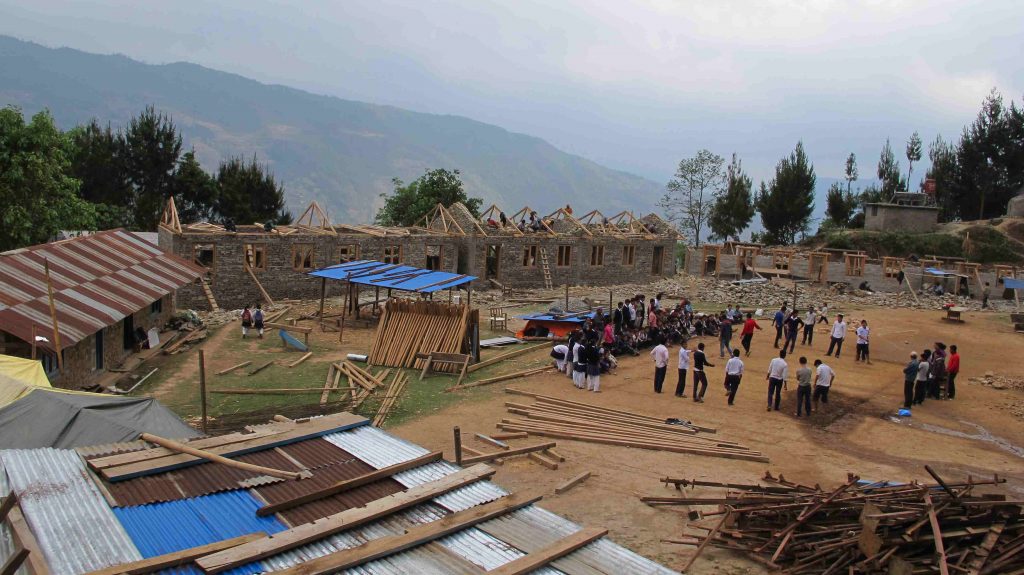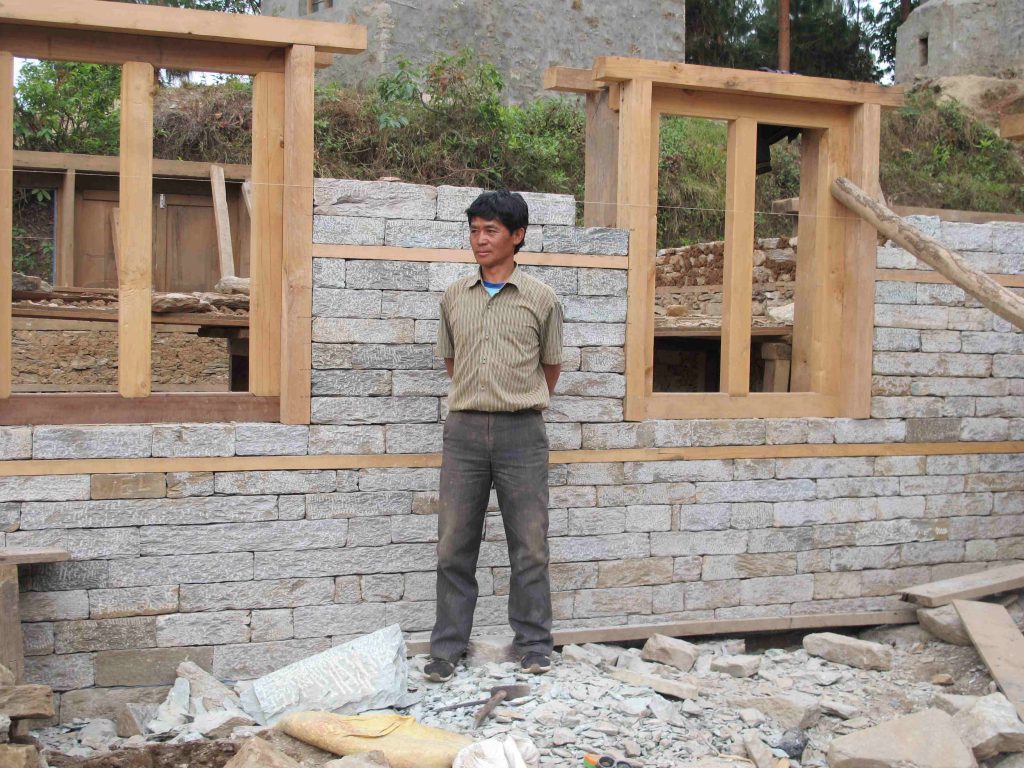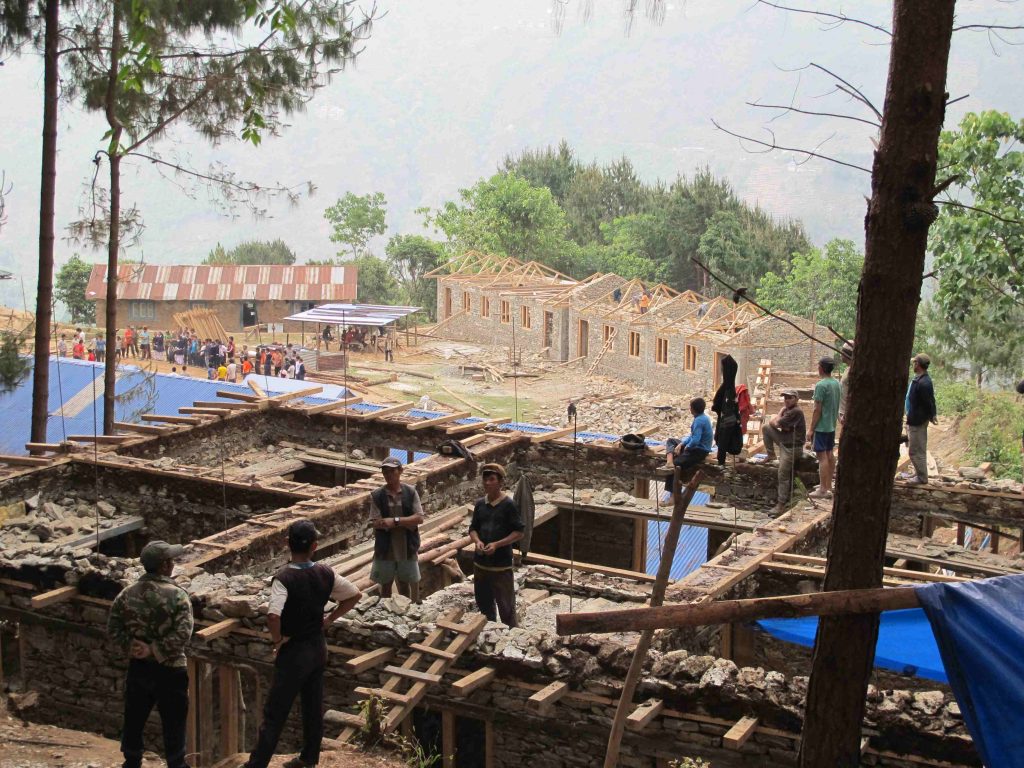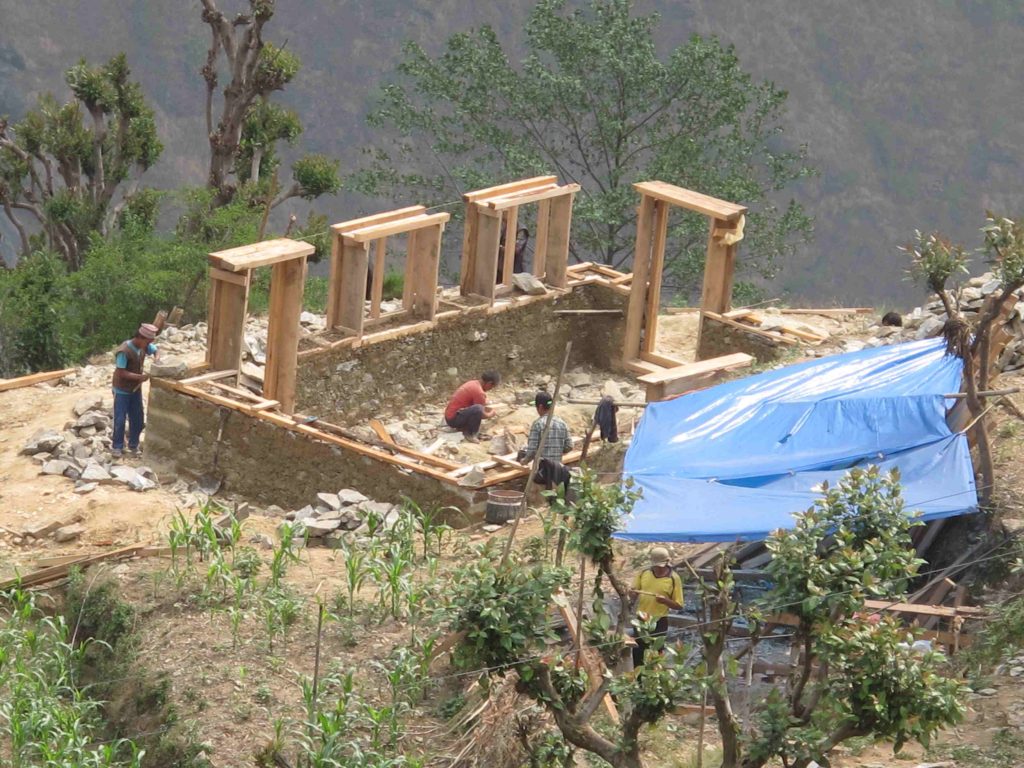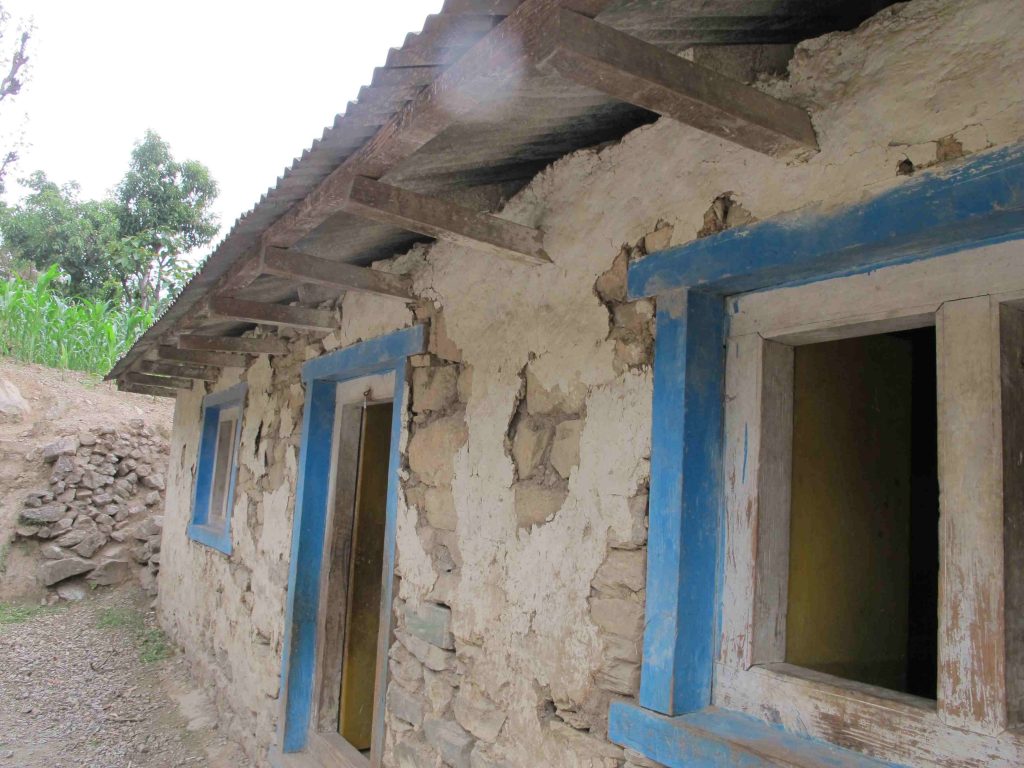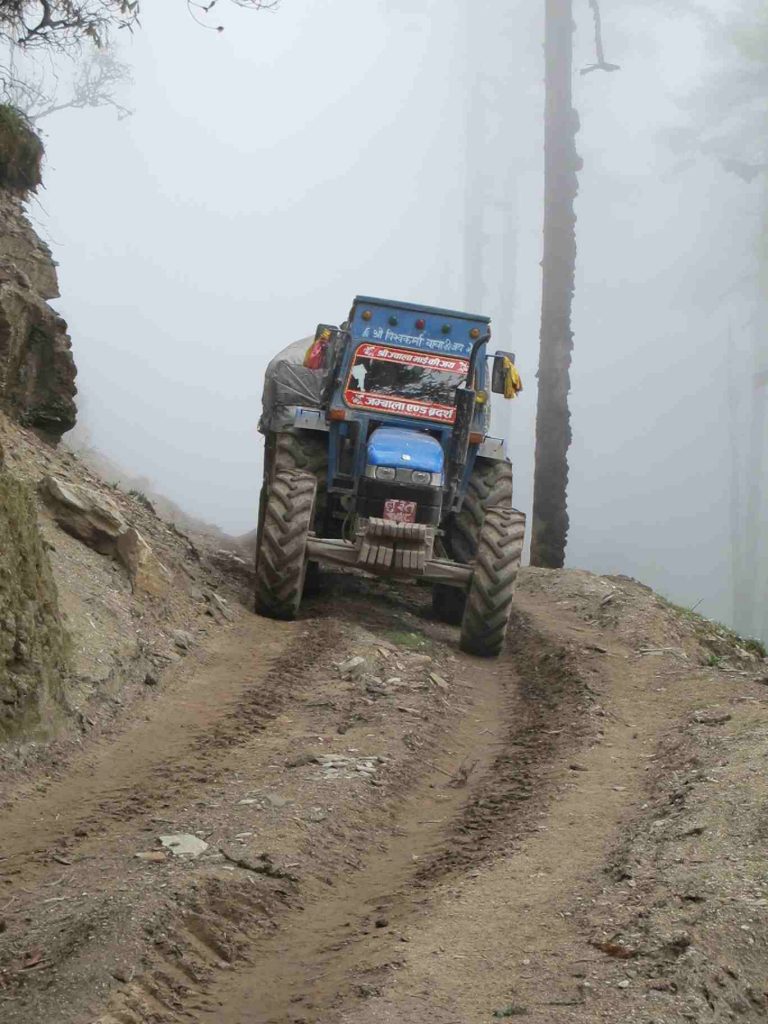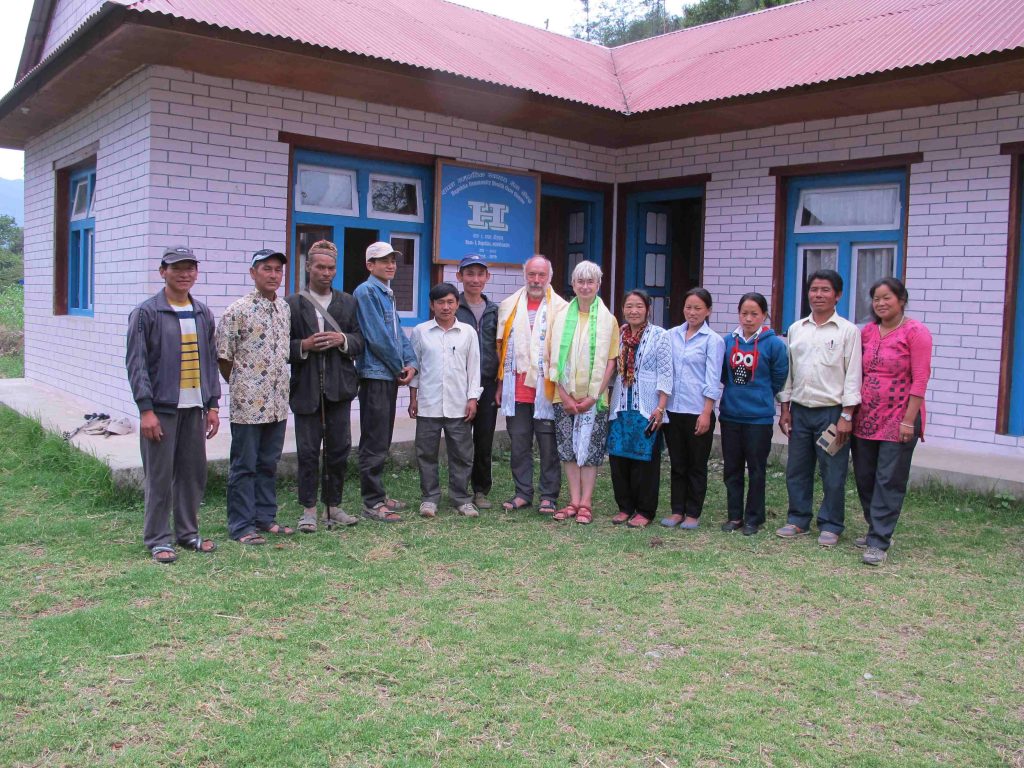We visited Rapcha at the end of May. We were pleased to note that the reconstruction work had progressed well, both on the collective buildings and the individual houses, bearing witness to the responsiveness and courage of our Nepalese friends.
The anti-seismic standards recommended by the architects and engineers with whom we have been working for the past year have been complied with to the letter.
7 classrooms are under construction and will be watertight before the monsoon season on the Basakhali Secondary School site, as well as a 6-room teachers’ house. Two NGOs and private individuals are behind the project.
The building that our Association built 12 years ago suffered damage in the earthquake on the first floor and is now considered unsafe. This raises the question of whether it should be repaired or the floor demolished. A specialist engineer we have commissioned will be carrying out an assessment shortly.
150 detached houses are being rebuilt in the district (population 3,000), although the subsidy promised by the government has not yet been distributed. Unfortunately, some of the poorest (and worst affected, in the lower part of the district) are still living under tarpaulins or in partially destroyed, unstable houses.
While the school in Lop, which was completely destroyed and where classes are held under metal sheets, will be rebuilt as planned (by NGOs and the government), the state of the school in Bodu has not been taken into account. The oldest building in the school is in a disastrous state, with walls on the verge of collapsing, yet classes are still held there. What’s more, work on the runway (which now runs close to the college) has cut off the school’s water supply, with no repairs planned for the time being.
The dispensary is working well, but it is deprived of water during the 3 to 4 months of the dry period due to a deficient network; the purchase by our association of a 1,000-litre tank could be a solution to this shortage. In addition, we will have to continue our financial efforts to purchase medicines: we had increased our contribution because of the resurgence of pathologies following the precarious housing conditions following the earthquake. However, the medicines available at the dispensary are far from covering the needs, and we will have to resort to external purchases.
The Village Committee (MIC) has also made a request for a collective building that could also be used as a shelter in an emergency. It would be built in full compliance with the recommendations of ENSAL (Lyon School of Architecture), with improvements (chimney for smoke evacuation to the outside, rainwater recovery, partition walls, careful drainage) that would also make it a show house.
While a larger proportion of our finances is allocated to collective structures (buildings, water supply, dispensary), we want to devote some of it to those most in need, even if it is not easy for the Village Committee to choose the beneficiaries. There’s also the question of the order of the various projects, because we can’t do them all at once.
But one project will start in October.
We would like to extend our warmest thanks to our donors, whose generosity has enabled us to bring these projects to fruition.
Bernard Simonet


